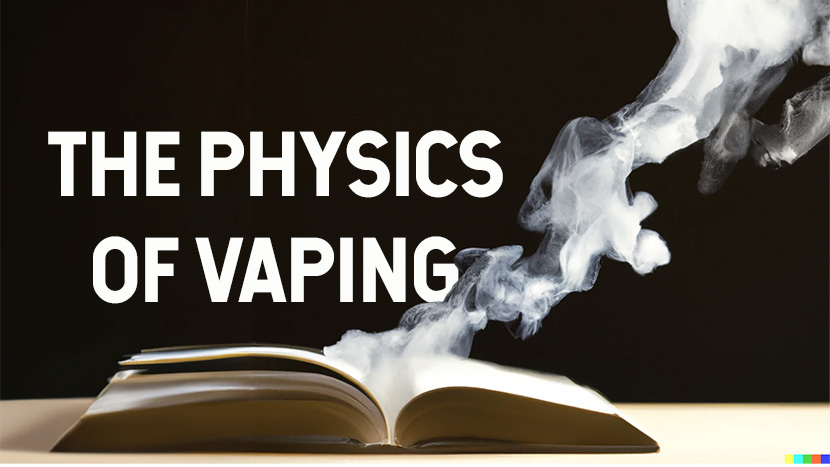Turning Chemicals into Clouds: The Physics Behind Vaping
Have you ever seen a cloud blown from a vape and wondered why? How exactly does a little vape device turn eJuice into vapor, and why is vaping used as a delivery method for various chemicals? Here’s a hint: it’s not just because it feels good or looks cool. Let’s take a look at the physics and the science behind vaping.
The Physics of Making Clouds
There are many types of vaping devices out there. But inside most devices, you’ll find a battery, a coil (or atomizer), a tank to hold the e-liquid, and a mouthpiece from which to inhale the vapor. Each of these components plays an important role in the vaping experience.
The battery serves as the powerhouse of the vape, supplying energy to heat the coil. Thanks to Ohm’s Law, it acts as a resistance and generates heat. The coil, in turn, is often wrapped around a wicking material that absorbs the e-liquid. As it heats up, it warms the liquid soaked into the wicking material, causing it to vaporize.
You may be wondering just how hot the coil gets to be able to produce that much vapor. And while vape coils do get very hot, vaping devices also have chemistry on their side.
Most types of eJuice — click here to see examples — are composed of propylene glycol (PG), vegetable glycerin (VG), nicotine (in various concentrations or none at all), and flavorings. Both PG and VG have lower boiling points than water, so they can be turned into vapor at the relatively low temperatures generated by the coil.
Vaping as a Delivery Method
One of the main advantages of delivering chemicals through vapor is that it allows for a rapid introduction of substances like caffeine, nicotine, CBD, THC, Delta 11, and more into the bloodstream. If you want immediate effects, vaping is one of the fastest delivery methods out there.
Inhaling vapor enables substances to be absorbed swiftly through the delicate, permeable membranes in our lungs. The lungs are home to a myriad of tiny air sacs known as alveoli, which boast a staggeringly vast surface area. These alveoli eagerly embrace the vapor and swiftly usher the dissolved substances into your bloodstream, which then carries them efficiently to your brain and throughout your body.
This ease of absorption also increases the bioavailability of substances. Bioavailability refers to the proportion of a substance that enters the bloodstream when it is introduced into the body and is made available for use or storage. In simpler terms, it’s how much of the substance your body can actually make use of.
Thanks to this high bioavailability, 10mg of Delta 11 delivered through vaping will have a stronger effect than the same amount ingested as pills. This is important to understand when trying to manage your dosage of different substances. Bioavailability is also an important factor to consider when weighing the cost of products with different delivery methods on websites like this one.
For example, if you find 1000mg of nicotine available in pill form and as an e-liquid for the same price, the e-liquid is a better deal. The increased bioavailability means you’ll be able to make the e-liquid last a lot longer especially if you invest in a device that helps you control the dose of each hit.


































































































